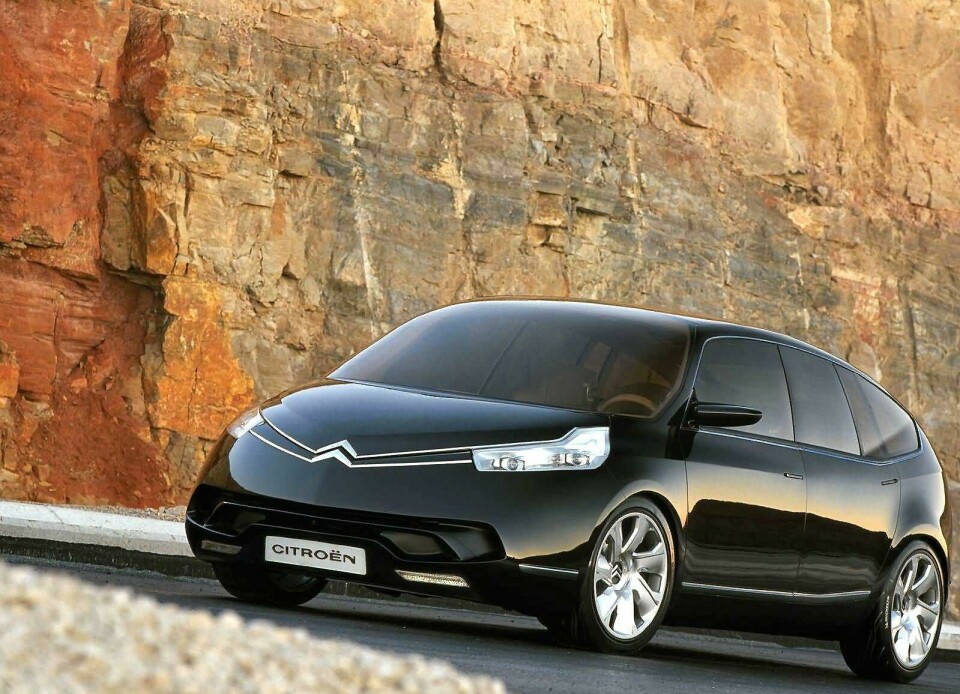
Concept Car of the Week: Citroën C-Airlounge (2003)
The Citroën C-Airlounge was unveiled at the 2003 Shanghai Motor Show








This week Citroën previewed its Aircross concept, due to be shown at the Shanghai motor show later this month. It’s a demonstration of how not only the market, but also how the brand has changed over recent years.
Looking back to 2003, the C-Airlounge concept was perhaps the closest in concept to the Aircross - a mid-sized family car with an emphasis on aero. But while its minivan format now seems rather old-hat compared to the rather faddish crossovers of today, it still features design elements that seem entirely contemporary. In fact, we’d go so far as to say you could place this on a show stand right now and it would still stand up to scrutiny.
Here’s what Car Design News’ Nick Hull said of it at the time:







The exterior design combines soft forms with kinked, angular lines that were difficult to appreciate in such a dark body colour on the show stand. The headlamps and taillamps are developments of themes seen on the C-Airdream concept last year, with the various lamp functions delineated by abstract, almost watery, graphics within the angular lamp outline.
The large double-chevron grille, with chrome whiskers that feed into the headlamps, previews the face of the forthcoming C4 model, while the lower grille motif gives a powerful expression to the front face.
The screen is quite bulbous with the upright windscreen pillars kinked forward at the base with a small marker lamp in the ensuing triangle.
Designer, Domagoj Dukek explains that “the whole front end feeds from the chevron emblem, with a large, powerful volume to the front end reminiscent of the classic DS, and with a very subtle fade out of glasshouse and body. At the rear, the tumblehome continues up into the windows with a small crease line in the glass to add a little tension, counterbalancing the bodyside lines that fall to the rear.”
The C-Airlounge is notable for its low drag figure of 0.26 and subtly incorporates four different airflow control systems:
- Blade vortex generators: these deflectors appear as a comb spoiler across the rear of the roof. They create local swirls of air which allow the boundary layer of air to remain attached for longer.
- Wheel fairings are placed in front of all four wheels to deflect airflow downwards from the tyre tread.
- Airducts in the front wheelarches channel air from high pressure intakes in the lower grille via two different routes. A vertical blade of air exits in front of the outer edge of the tyre to smooth the wheel profile. Meanwhile, a horizontal blade of air exits from a slit in the front undertray which assists in limiting the frontal impact of air on the tread.
- Wheelrims are designed to suck air to the centre of the wheel to minimise swirl.
The interior, by designers Pascal Grappey and Francois Duris, is laid out as four individual seats with a ‘modular seating system’ where the seats can be rearranged to suit. The rear centre seat can fold and submarine under the front seats while the two outer seats articulate both in and rearwards to offer more shoulder room when used in four-seat ‘premium comfort’ format.
The most interesting aspect of the C-Airlounge is the radical new take on interior lighting systems, which allows the passengers to select the mood of lighting, thanks to fibre-optics and video projectors within the carpets and armrests.
The door panels are covered in woven silk with interwoven fibre optics, which illuminate to give two distinct motifs: chevrons or an arabesque pattern.
The bright red twisted armrests, inspired by aerodynamic vortices and looking like giant fusilli pasta, can also be illuminated so that up to five distinct ambiences can be created:
- The original PURE guise where natural light floods into the interior through the glass roof.
- A COVIVIAL spirit: A diffused warm light gives a candlelike glow.
- INTENSE ambience where the door panels and floor are backlit with chevrons in a fiery red colour.
- ROMANTIQUE spirit: the door panels are further illuminated with cool arabesque motifs and the backs of the seats have abstract patterns projected onto them.
Based on an extended C5 platform, the C-Airlounge from Jean Pierre Ploue’s design team is refreshing in taking a typically unusual and intellectual approach to advanced design, which is fitting for the Citroen marque.



